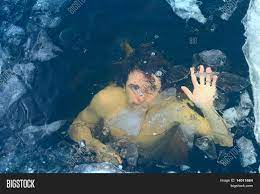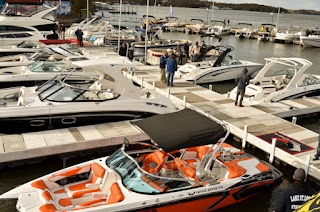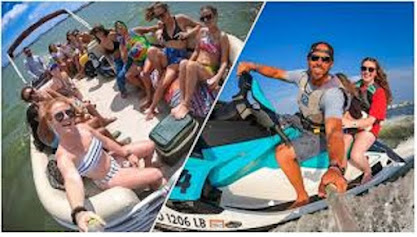Cold-Water Drowning
On November 26, two lives were lost at Lake of the Ozarks. Both were visitors, both drowned. The report indicated that one swimmer began to struggle and went under and did not resurface. His friend dove into the water to his friend and he also did not resurface. Neither individual was wearing a life jacket.
This is a grim reminder, that water activities when
the water temperature is low will greatly decrease the chances of survival. Typically,
people in temperate climates don't consider themselves at risk from hypothermia
in the water, but hypothermia can occur in any
water temperature below 70°F.
It was noted on the day of the drowning the water
temperature was 54 degrees F. To some 54 degrees F may seem warm. However, at this temperature your body will
succumb to hypothermia, death will
follow if rescue does not come quickly.
At a water temperature of
32.5 to 40 degrees, death may occur in 30 - 90 minutes. At a water temperature
of 40 to 50 degrees, death may occur in 1 - 3 hours. At a water temperature of
50 - 60 degrees, death may occur in 1 - 6 hours. Trying to swim makes you lose heat faster as well. Your body will exert more energy and heat in
the attempt to keep vital organs functioning.
The 4 Phases of Cold-Water Drowning
1. 1. Cold
Shock Response: This response affects
breathing and happens within the first minute. An automatic gasp reflex occurs
in response to rapid skin cooling. If the head goes below water, water may be
breathed into the lungs, resulting in drowning. A life jacket will help keep
your head above water during this critical phase. Additionally, hyperventilation,
like the gasp reflex, is a response to the cold and will subside. Panic will
make this worse, so the key is to control breathing.
2. Cold Incapacitation: This response occurs within the first
five to 15 minutes in cold water. In order to preserve core heat, vasoconstriction
takes place decreasing blood flow to the extremities to protect the vital
organs. The result is a loss of movement to hands, feet, arms and legs. Unless
a life jacket is being worn, the ability to stay afloat is next to impossible.
·
Shivering
·
Slow and shallow
breathing
·
Confusion
·
Drowsiness or
exhaustion
·
Slurred speech
·
Loss of coordination
·
Weak pulse
4. Circum-rescue Collapse: This experience can happen just before rescue and is not well understood. Symptoms range anywhere from fainting to death. Some experts believe an abrupt drop in blood pressure may cause this final stage of cold-water drowning, post-rescue.
If you are boating, working on your dock, fishing, and water related activity please do the following from National Safe Boating Council
Here are some tips to keep in
mind before you head out on the cold water.
• Do make sure everyone is
wearing a life jacket. Even experienced swimmers can experience shock within
one minute in the frigid water and may lose muscle control within 10 minutes.
• Do file a float plan with
someone you trust that includes details about the trip, boat, passengers,
towing or trailer vehicle, communication equipment, and emergency contacts.
Download a free float plan template at FloatPlanCentral.org.
• Do dress properly for the
weather, always wearing layers, and bring an extra set of clothes in case you
get wet. Remember, dress for the water temperature, not the air temperature.
• Do catch your breath. A
sudden unexpected fall into cold water causes an involuntary gasp (or torso)
reflex. It takes less than ½ cup of water in your lungs to drown. If you remain
calm, you have a greater chance of self-rescue.
• Do look for ways to
increase your buoyancy. If you’re alone, utilize the H.E.L.P. (Heat Escape
Lessening Position) and if you’re in the water with others, huddle together
with everyone facing inwards to help everyone stay afloat and keep warm.
• Don’t panic if you fall
into the water. Stay afloat with the help of your life jacket, regain control
of your breathing, and keep your head above water in vision of rescuers. Stay
with the boat if possible.
• Don’t apply heat to
extremities like arms and legs of a rescued victim. This sudden change in
temperature may cause cardiac arrest.
Recreational water activities
during the winter and early spring are a lot of fun, but always remember safety
first.




Comments
Post a Comment